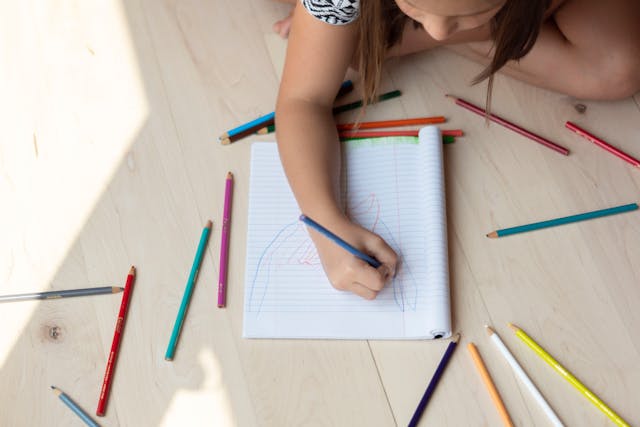Children love being involved in some form of art. From finger painting, drawing with crayons, or even forming shapes out of clay, there are a variety of ways for them to express their creativity. But besides happiness and self-fulfillment, which are given by creative pursuits, art activity has dozens of positive effects on a child’s development. The following article explores how art education helps the growth of a child, ranging from creativity in solving problems to even improving their motor skills.
Fostering Creativity and Imagination
When the children are allowed to create, you find out that they come up with ideas that can never be envisaged through structured activities. Whether they are painting a world that they have dreamt up or painting a picture of Fido, there is something about making something from nothing that aids in their thinking. Such thinking is not just helpful to art; it, in fact, applies to every aspect of life. Creativity, critical thinking, and flexibility of thinking patterns that are so essential for the creation of solutions, innovation in dealing with problems, and approaching problems from several aspects are all encouraged by the arts. When children grow, these skills become useful in their classwork and in other aspects of their lives.
Enhancing Motor Skills
Art is not just an intellectual process. It is also physiological. While painting, cutting paper, and modeling clay, the child is also developing their fine motor skills. These are the minor movements that need the control of the brain on the muscles, especially those of the hands and fingers. Painting using white acrylic paint can greatly enhance a child’s skill over time. This kind of development leads to other skills like writing, tying shoelaces, and even playing musical instruments.
Building Emotional Expression
Children gain the ability to channel their feelings and emotions through art safely, and they might demonstrate some feelings and emotions that they are incapable of putting into words and that they may not expose in any other manner. Any sense that a child tries to express may be accompanied by a picture that a child has painted in an attempt to illustrate feelings such as happiness, anger, or even sadness. It is especially useful for children who have a small number of words in their repertory and verbalization of feelings is difficult for them. Through children’s drawings, paintings, or any other forms of art, they discover healthy ways of explaining themselves and, hence, healthier emotional well-being in the future.

Boosting Confidence and Self-Esteem
Another aspect that artists enjoy when working on their art is the satisfaction that they get once they are through with their artwork. For children, this feeling is further enhanced when they find their products hanging at home or school. Finishing an artwork, no matter how basic or how complicated, gives children a certain feeling of accomplishment. It may be generalized to other aspects of their lives, and they may be ready to take on additional difficulties in the future. With this, the child develops confidence with their work and will become more encouraged to search for other ideas due to the motivative outcome.
Encouraging Patience and Focus
Art ensures that time is taken, focus is observed, and children are provided with a keen eye. It may entail painting, color mixing, or precise movements. In the modern world, it has become a major asset to be able to learn how to pay special attention to one task, or event without being interrupted. Arts make children more patient with themselves, knowing that great things take time, and more patient with the process of making art. Instead of participating merely for the result, students get to understand that creativity is quite strenuous and needs much commitment and hard work.
Conclusion
It is erroneous to consider art as entertainment for children; it is a crucial part of their learning process that contributes to the child’s creative thinking, motor skills, and emotional growth. It helps in developing confidence, helps one be patient, and increases tolerance, especially towards other people. There are no words to describe the beauty of the art produced by a child after they have been given the tools and the chance to embrace the artist within them, but what you are doing for your child in doing so is building a foundation from which they can carve out their success in all aspects of life.


